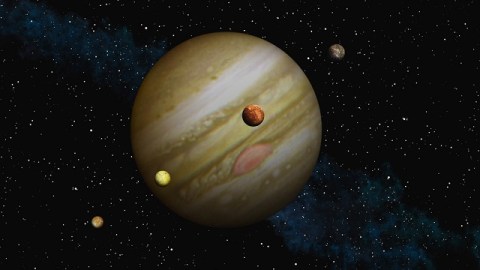Could There Be Life On Jupiter’s Moons?

What’s the Latest Development?
While Curiosity and its older cousin Opportunity traverse the Mars landscape, some scientists believe there may be likelier locations for extraterrestrial life. To this end, the European Space Agency is leading an internationally-supported mission titled Jupiter Icy Moons Explorer (JUICE) which has as its goal the launch of a probe in 2022. If all goes well, it will arrive in Jupiter’s neighborhood in 2030, where it will spend at least three years surveying the area and eventually go into orbit around the largest moon, Ganymede.
What’s the Big Idea?
Ganymede and its sister moon Europa have icy surfaces covering deep oceans of water in which all kinds of organisms could possibly exist. Lead scientist Andrew Coates says JUICE will compare these moons as well as another ice-covered moon, Callisto, and “look at the habitability of all three and the formation processes.” Europa in particular has garnered attention recently because of new research revealing abundant amounts of hydrogen peroxide on the surface, which could help supply the chemical combination needed for ocean life. However, Ganymede has a magnetic field that protects it from radiation, which could make it an even better candidate for life.
Photo Credit: Shutterstock.com





